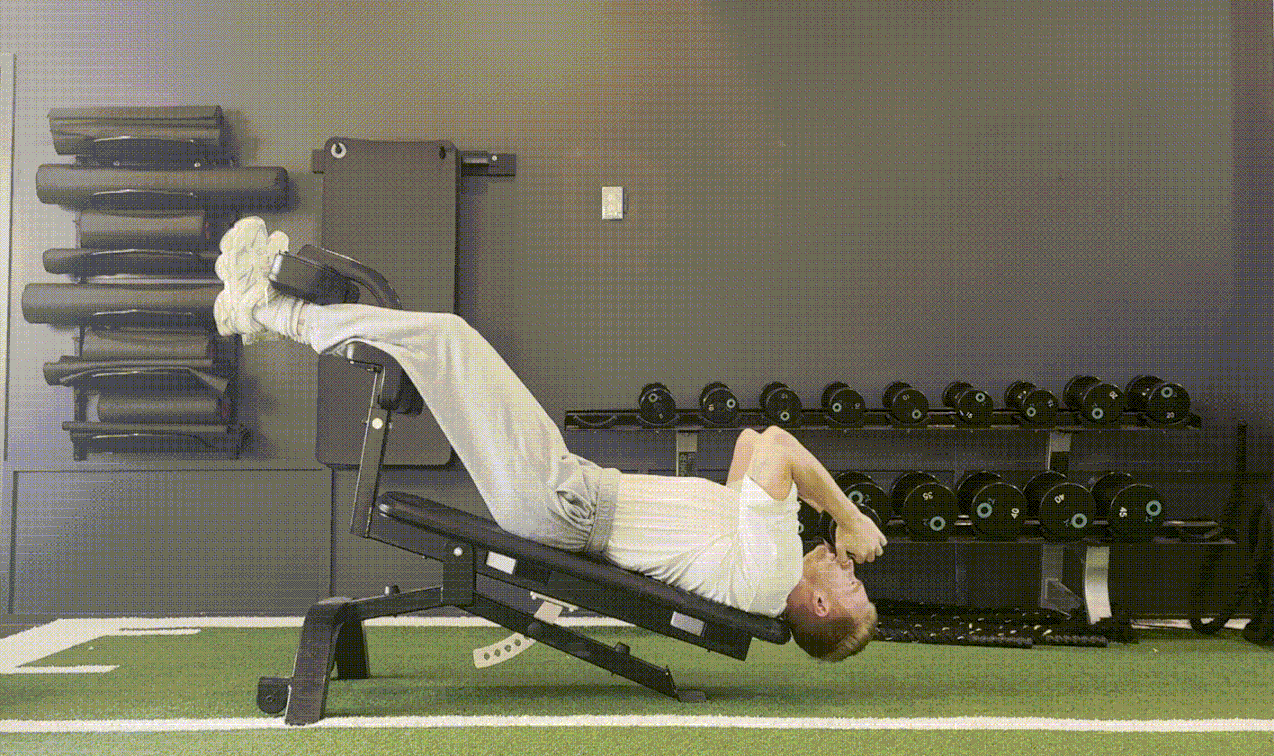“Um, actually, abs are made in the kitchen…”
You’ve probably heard that line before, but it’s not the whole story. Abs are also made in the gym.
- Everyone has six-pack abs. If you can’t see yours, you may need to lose a bit of body fat. But your abdominal muscles aren’t special; you can make them stronger and more visible by performing exercises for abs.
Here’s the best part — you don’t need to do core circuits, use fancy equipment, or dedicate half an hour a day to ab workouts, either. Two specific moves will do the trick.
We’re going to break down the only two exercises for abs you need to build a six-pack, and we’re going to do it in 500 words or less.
Ab Anatomy, Explained
To understand why these are the only two exercises you need for abs, you need to grasp a bit of anatomy.

[Related: Best Fat Burners for Revealing Your Six Pack]
Your rectus abdominis muscle runs down the front of your torso, connecting your ribcage to your pelvis. One of its primary functions is to pull those two bones together.
- If your torso is locked in place but your legs can move, your abs contract to tilt your pelvis posteriorly; think of a hanging leg raise.
- If your legs are subdued but you can move your torso, your abs pull your ribs down; think crunches.
That’s why you only need two exercises for abs. One where your legs move and one where your torso moves. Anything else is extra credit.
The 2 Best Exercises for Abs
The only two abs exercises you need to build your six-pack are the decline crunch and decline reverse crunch. Why?
- To do both exercises, all you need is an adjustable weight bench.
- Each exercise challenges your abs across a full range of motion.
- Both exercises are loadable, so you can improve strength and definition alike.
1. Decline Crunch

How To Do It
- Set the bench to a downward angle and lie on your back with your legs fixed against the pads.
- Inhale and arch your spine to stretch your abs while holding your hands behind your head or clasping a weight in front of your face.
- Exhale and crunch, lifting your shoulders off the bench and pushing your spine flush against the bench.
To properly activate your abs, arch and flatten your spine against the bench as you crunch.
To progress, you can adjust the angle of the bench or incorporate progressive overload by holding a weight plate or dumbbell. A steeper bench makes the exercise harder by reducing leverage; holding a weight adds extra tension and makes it easy to track progress.
2. Decline Reverse Crunch

How To Do It
- Lie on the bench with your legs mostly straight and your heels on the floor.
- Grab the back of the bench, inhale, and arch your lower back.
- Exhale, push your spine into the bench and lift your legs until your toes point toward the ceiling.
To master your form, think about getting your butt off the bench as early as possible when lifting your legs and keeping it off the bench as long as possible as you lower your legs down.
To progress, pinch a small dumbbell between your knees, not your ankles. You can use heavier weights this way and there’s less temptation to activate your hip flexors.
Why These Ab Exercises Work
With so many options for ab training out there — seriously, how many crunch variations have you tried? — the idea that you only need to do two, in the same place, with the same equipment, might sound too good to be true.
At the end of the day, almost any core exercise for abs will work as long as you do them correctly and consistently. That said, there are a few specific reasons why we love the decline crunch and decline reverse crunch as a pair:
- Both exercises challenge your abs the most when the muscle is stretched. Scientific studies tell us that applying tension to a muscle in its lengthened position is integral for maximizing muscle growth. (1)
- Neither exercise has a complicated technique or is dangerous. If you have pre-existing back issues, you may want to proceed cautiously, but studies tell us there’s no significant risk to flexing your spine. (2) It’s a series of joints just like the rest of your body, and joints are meant to move.
- You don’t need to run all over the gym doing five different exercises or scrambling for equipment. Almost all gyms have a standalone decline bench or a decline bench press station.
If you don’t have access to an adjustable bench, you can do these two moves on the floor just fine. They just won’t work as well or for as long.
Before you start thinking you’ve cracked the code on six-pack abs, remember that all the ab training in the world won’t help you see your abs if you’re carrying too much body fat. “Abs are made in the kitchen” is a half-truth. Your six-pack is built in the gym, but it’s revealed by following a proper diet, including a calorie deficit.
More Training Content
- Strength Training Works as Well as Stretching for Flexibility, Study Shows
- The 8 Worst Exercises for Strength, From the “Impractical” to the “Stupid”
- How To Get a V-Taper: Workouts & Training Tips From the Pros
References
- Pedrosa GF, Lima FV, Schoenfeld BJ, Lacerda LT, Simões MG, Pereira MR, Diniz RCR, Chagas MH. Partial range of motion training elicits favorable improvements in muscular adaptations when carried out at long muscle lengths. Eur J Sport Sci. 2022 Aug;22(8):1250-1260. doi: 10.1080/17461391.2021.1927199. Epub 2021 May 23. PMID: 33977835.
- Schoenfeld, Brad & Kolber, Morey. (2016). Abdominal Crunches Are/Are Not a Safe and Effective Exercise. Strength and Conditioning Journal. 38. 1. 10.1519/SSC.0000000000000263.
Featured Image: Serhii Bobyk / Shutterstock